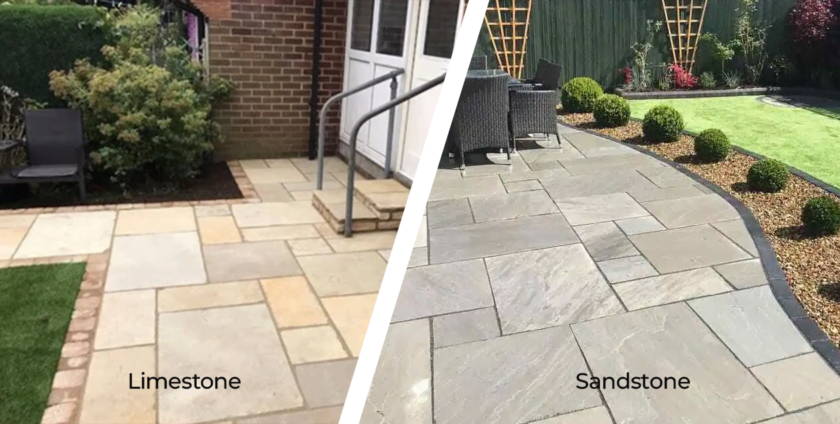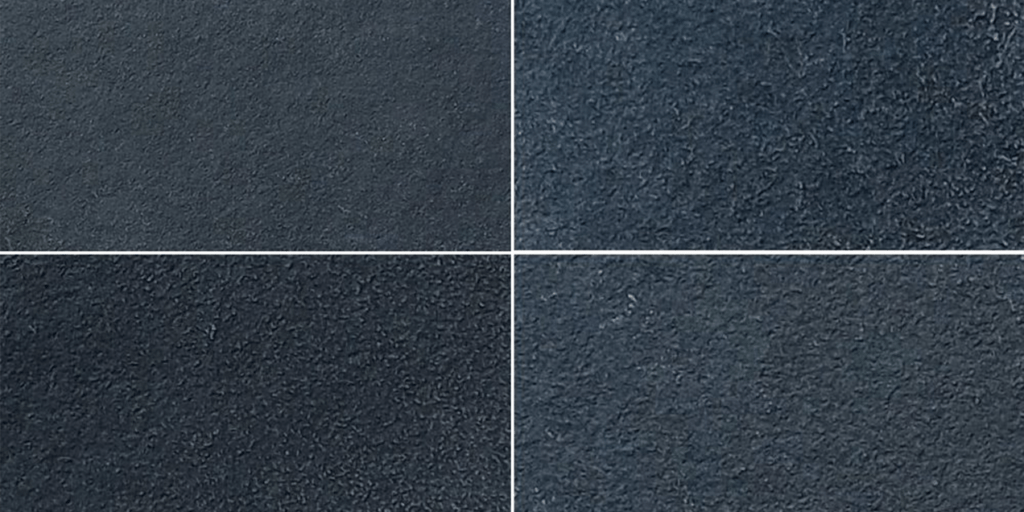Limestone vs Sandstone: Which is the Better Choice?
- By: Rahul Dev
- Category: Natural Stone
- 0 comment

Limestone vs sandstone, these two natural stone varieties, might seem ordinary but play crucial roles in shaping residential and commercial landscapes. Both contribute immensely to aesthetics and structural integrity in the architectural and construction industries. In this blog, we will comprehensively analyze the world of sandstone vs limestone and compare their origins, compositions, durability, appearance, unique characteristics, cost and more.
Whether you are an architect or a procurement expert, scroll down to learn more about the cornerstones of successful construction ventures in the sector – limestone vs sandstone.
What is Limestone?
Limestone is a natural stone, which is a type of carbonate sedimentary rock. It is mainly composed of minerals like aragonite and calcite. The formation happens through biological and non-biological processes when calcium-containing minerals precipitate from water. Most of the limestone is formed in shallow marine environments like continental shelves or platforms. It has a relatively uniform mineral makeup, but their textures vary greatly.

What is Sandstone?
Sand-sized rock, mineral, and organic particles like quartz and feldspar make up most of the sandstone. It is a kind of clastic sedimentary rock. The sand grains from the weathering rock beds are carried by rivers and other flowing water bodies. They are ultimately deposited, compacted, and cemented together for millions of years leading to sandstone creation. It contains cementing materials that tie the sand grains together.

What are the Applications of Limestone and Sandstone
When comparing sandstone and limestone, keep in mind that both are adaptable materials that have been used for both architectural and landscape design purposes throughout the ages. They are appropriate for outdoor applications since they incorporate elegance and beauty with toughness.
Limestone is appropriate for a wide range of interior and outdoor construction jobs, including wall cladding, countertops, flooring, sculptures, and kitchen counters. Flagstone, or the paving slabs used for walkways, flooring, patios, cladding, fences, and roofing, are made from sandstone. But if you are torn between which one to pick for your projects; we have discussed the major key distinctions between the natural stones below.
Key Differences: Limestone vs Sandstone


Build Up
Calcite and aragonite are two main minerals that make up limestone, together with fossils of living organisms, including echinoids, mollusks, and corals. It is created in the seabeds through the precipitation of carbonate and the accumulation of organism deposits throughout time.
Whereas sandstone formation results from the deterioration of larger rocks. Sand grains are small particles from the deterioration that wash up on the basin of rivers over time while forming tall cliffs cemented together tightly.
Composition
Limestone is comprised of carbonate mostly which often comes from the fossils of animals such as mollusk’s shells. Based solely on texture, formation, and content, geologists employ more complicated classifications to define limestone.
Despite the possibility of high feldspar content, quartz makes up much of the sandstone composition. The amount varies depending on the source and how water or wind modified the stone during development. Typically, calcite, clays, and silica are combined to form the cement holding the grains together.
Appearance
Limestone does not offer a stratification like sandstone. It consists of fossils which give it a unique pattern visible to the naked eye. It usually comes in shades like grey, but you can also find it in other colors like white, brown, or yellow. Its natural, warm, and soft aesthetic makes it an excellent option for interior design.
Sandstones have layers of rocks and sand, and their texture is like that of sandpaper. It has a granular and coarse texture where one can see individual grains upon close examination. The layers offer a stratification pattern that is not present in limestone. It comes in shades of red, blue, brown, green, etc.
Durability
Talking about limestone vs sandstone strength, limestone is a strong natural stone that can last you forever. It has high resistance to exterior weather conditions making them a suitable choice for external use. However, it may be hard to customize and work with because of its toughness.
Sandstone is also a sturdy natural material, and it is softer than limestone, making it easy to work with and customize. However, the softness also makes it susceptible to dents and scratches even when installed indoors. But it’s denser than limestone which is why it is popular worldwide.
Acid Resistance
Limestones react highly with acids; thus, it is essential to remember to take precautionary measures. It is best to avoid cleaning solutions that are acidic to keep the stone from staining or etching.
On the contrary, sandstone can handle mild acids well making it easier to clean using detergents or surface cleaners that might have some acid content in them. However, one must remember that a strong acid solution can damage both options severely.
Weather Resistance
Limestone has lower resistance to harsh weather conditions than sandstone, but it is still stronger than other kinds of natural stones. However, it absorbs less water than sandstone making it more water resistant.
Sandstone is porous, meaning water can affect it to a certain degree. However, it has a high heat resistance of up to 0.92 kj/kg. It works better against color weakening and texture.
Slip Resistance
Both limestone and sandstone are highly resistant to slipperiness. However, it all depends on the finish of the sandstone and limestone slab and tiles. The finish can increase or decrease the slip resistance. For instance, the polished stone may get more slippery when wet.
Cost Effectiveness
Sandstone and limestone prices do not differ a lot. It all depends on the wholesaler you are getting it from. Both natural stones are more cost-effective than marble and can add instant value to your project when installed. If you want to buy any slab or tile at the best price, visit Stone Discover, India.
Sandstone vs Limestone: Which One to Buy?
Both sandstone and limestone require frequent maintenance and share similar qualities. Our experts at Stone Discover advise using limestone whether you’re seeking paving material for your home’s inside or something that can be laid around the property. Sandstone, however, is the ideal option if you’re looking for natural stones with more color options and distinctive textures.
Ultimately, whether you prefer sandstone or limestone, they can both be excellent as long as they serve the objectives you have in mind considering your commercial or residential project. If you require any help regarding selecting one between the two, contact us at Stone Discover where we offer an exquisite range of limestone and sandstone at the best prices!
Stone Discover – Sandstone & Limestone Wholesale Supplier
Stone Discover emerges as one of the finest sandstone & limestone wholesale suppliers from India. We have been a pioneer in the natural stone industry since 1984. We offer an exquisite natural stone collection slab and tile collection for internal and external construction purposes you can’t refuse.
Get a Free Consultation
Our limestone collection presents options like black limestone, Kadappa Black limestone, Kota Blue limestone, Kota Brown limestone, Tandur Grey limestone, and Tandur Yellow limestone. In Sandstone options we have Agra Red sandstone, Autumn Brown sandstone, Kandla Grey sandstone, Dholpur Beige sandstone, Mandana Red sandstone, Mint sandstone, Pink sandstone and Rainbow sandstone.
At Stone Discover, we can assist with no matter which project you have, whether it’s a small or large-scale commercial operation. Contact us today to make your construction project a success!
- By: Rahul Dev
- Category: Natural Stone
- 0 comment

Leave a Reply
You must be logged in to post a comment.